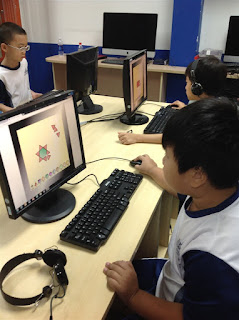This week my students continued working towards becoming "Masters of Measurement" through investigations exploring the weight of items.
One group looked at real life items that we buy in shops and identified the weight of each item using grams and kilograms and then sorted them from lightest to heaviest.
Another group completed a weight scavenger hunt by searching around the classroom for items that had a certain criteria e.g. two items that weighed together are more than 1 kilogram but less than 2 kilograms.
Another group worked on problem solving an open ended question relating to measurement.
School to Home Challenge. Students were asked to follow up on their learning by blogging their response to the following questions:
- Imagine you had to measure the length, width and weight of a wild tiger. Which would be the hardest to measure and why? Rank the ways of measuring in order of difficulty. e.g. 1) Length - most difficult because...
- Can you find 5 items in your home that have grams and kilograms written on them?
- What was easy or tricky when you were completing the scavenger hunt?













